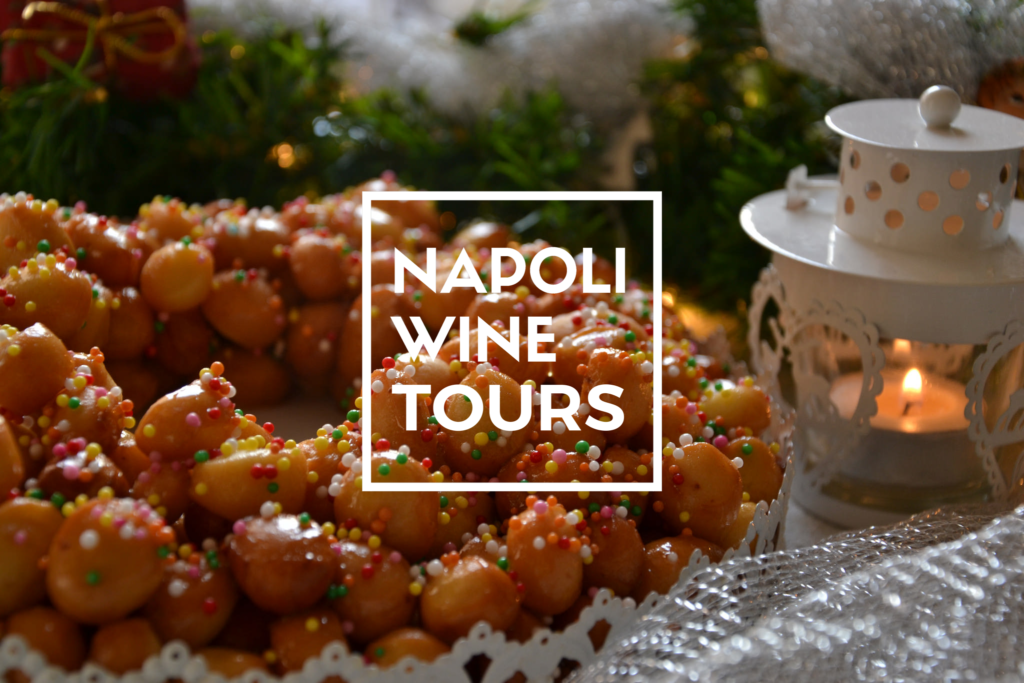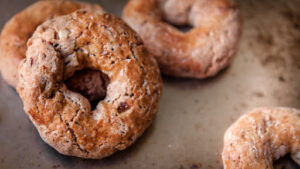
Christmas holidays are approaching. This year we will experience Christmas in a different way with more sober celebrations, with many restrictions, but this does not mean that we should not enjoy the pleasures of the table and sharing a good glass of wine. So let’s put aside the DCPM controversy and prepare ourselves in the best possible way to toast.
We have decided to tackle the dessert theme and its dessert wine matchings.
The choice of Neapolitan Christmas desserts is wide. Let’s have a look at some of the traditional desserts and their best wine pairings. As always, we focus on food / wine pairing and a premise is necessary. Desserts must be matched with wines chosen according to the “principle of concordance and harmony”, in other words sweets wines match harmoniously well with the dessert. Our choice must therefore go for a wine that supports the sweetness, persistence of the dessert but must also have the right freshness and acidity to balance the combination in order to make it pleasant, avoiding the risk of a cloying sensation.
The Neapolitan struffoli are part of the history of Neapolitan pastry even if they were not born in Naples. Someone traces the birth of fried balls back to the Greeks. In fact still nowadays in Greece you can find a similar dessert, the loukoumades. The name chosen by the Neapolitans derives from the Greek “strongoulos” and means “rounded in shape”. These small balls of deep-fried dough dipped in honey are then decorated with sugared almonds, called diavoletti (diavulilli) in Naples.
Such sweetness, fairly structured and aromatic that oscillates between the succulence induced by their consistency and the softness of honey, can be harmoniously combined with a wine with an evident residual sugar, basically soft, obtained from mainly dried grapes and whose aromas recall those of the exquisite preparation.
Wine:
Passito Torre Merlata 2019, Cantina Monta Somma Vesuvio, 14 c°.
Grapes: 100% Catalanesca.
The Catalanesca grape, native to the slopes of Vesuvius (sandy and arid soil), is characterized by a thick and crunchy skin; this allows the grapes to keep for a long time. In ancient times it was considered the Christmas grape, a period in which the Vesuvian peasants carried these beautiful golden bunches on their carts to be put up for sale to set the festive tables. Cantina Monte Somma has been producing this passito since 2010. The late harvest takes place around the 2/3 decade of October, the grapes are then left to dry on wooden frames in the Torre Merlata until January. It will then be pressed intact, only the free-run must is used for production. Refinement in barriques (not toasted) lasts from 8 to 12 months depending on the vintage. The 2019 we tasted spent 12 months in wood.
Color: straw yellow, with crystalline reflections
Nose: balsamic and herbaceous notes of fresh oregano open. A citrus fruit of candied mandarin peel closes.
Taste: Sweet, with a not excessive sugar residue, it amazes the balance in freshness that makes it soft and sufficiently warm. Persistent leaves the palate ready for another sip.
Perfect match with honey and the gustative persistence of struffoli.

Roccocò are the biscuits of the Neapolitan Christmas tradition par excellence, dating back to 1320: the nuns from the Real Convento della Maddalena in Naples are claimed to have prepared them for the first time, while their name might have been inspired by the French term “rocaille” for its rounded shape similar to a rounded shell. Together with the struffoli, the roccocò cannot be missed during the Christmas holidays. Starting from the feast of the Immaculate Conception (December 8, the date that begins the Christmas holidays) they are prepared in many homes and then kept, perhaps in a colorful basket in full view, at least until Epiphany, when the Christmas period ends. These are biscuits prepared with flour, sugar, almonds, candied fruit, shaped in the shape of a crushed donut and then baked in the oven. They are traditionally hard, but today it is also possible to find soft ones (hence the request of the pastry boy: “Vulite ‘e tuoste or’ e musce?”).
At the time of tasting they can be softened by dipping them in a white wine, or in a vermouth, in a sparkling wine, or in Vin Santo. The roccocò must first of all be crunchy, for this purpose the temperature and cooking methods are fundamental.
Wine
Marsala Superiore, Riserva Ambra, semisecco D.O.P, Pellegrini, 18°.
Grapes: Catarratto, Grillo e Inzolia
For the Roccocò we propose a semi-dry (between 40 and 100mg sugar) marsala (fortified wine) Ambra di Pellegrini. Made with Catarratto, Grillo and Inzolia grapes, characterised by a deep amber colour – hence the name – I found the product very spicy with a gradual scent of daters, Acacia honey and toffee orange zest. What impressed me the most was its persistence and pleasant freshness. It is a few degrees higher (18%) than other marsalas in the category (15%), but the alcohol is pleasantly absorbed by its structure. It will certainly do its duty in balancing a product as rich, complex and intense like the roccocò, especially when it only cost 15 euros.
Color: intense amber.
Nose: pleasant notes of dates and spices, acacia honey, and toffee orange.
Taste: full and warm, with hints of daters, good persistence, and freshness.
